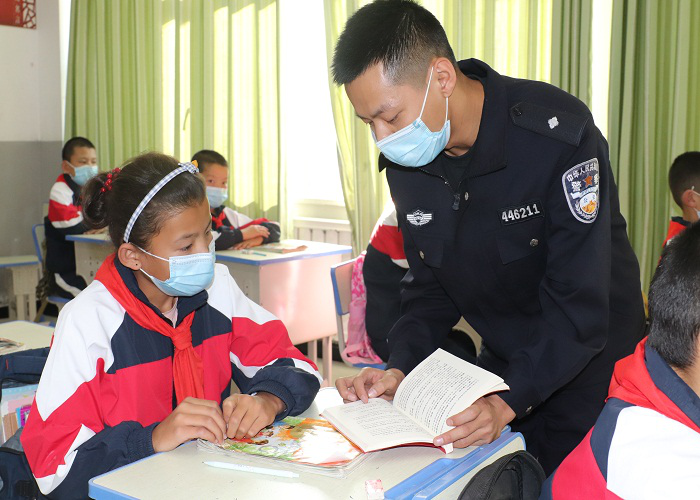PNAS: Ancient microorganisms reveal deep underground water cracking network
Author:Institute of Geological Earth Time:2022.07.27


The deep environment lives the vast majority of proletarians on the planet, and is the oldest life on the planet. These microorganisms are widely existing in the pores and cracks of rocks. They obtain nutrients from minerals and obtain energy from water rock reactions without oxygen and sunlight. They are diverse, rich in function, and extremely slow growth rates. In the early days of the earth, the harsh surface environment (high temperature, strong ultraviolet rays, etc.) could not bred any life, but a relatively mild and deep environment can support the survival and reproduction of microorganisms. Therefore, the exploration of the deep life of the earth not only helps to reveal the origin and evolution of the early life of the earth, but also has inspiration to the exploration of alien life. However, due to the difficulty of obtaining deep samples and high costs, the current understanding of the deep biosphere, especially the role of geological and hydrological processes on deep microorganisms, is still very scarce.
The Geothermal Energy Research Center of Stanford University and Yuran ZHANG (Zhang Yuran) and others at the Geological Microbiology Laboratory, relying on the EGS Collab Project project (EGS Collab Project), supported by the US Department of Energy. In the Golden Mine Road Road, a multi -point monitoring of the microorganisms in the water guide crack network has been performed for 10 months, and the longest -lasting and most resolution of deep cracks in the water -oriented microorganisms have been obtained. Utilizing multi -disciplinary technologies such as earth physics and geothermal development, combined with ecological theory, analyzed the laws and mechanisms of microorganisms with time, and first revealed the special construction mechanism that was different from other environments than other environments for the first time. The research results were published on PNAS in June 2022.
The purpose of the EGS Collab project is to improve the understanding of hydraulic fracture and rock heat selection process through deep field experiments and test new storage monitoring technology. Based on the EGS Collab crack network long -term exudation experiment (Figure 1), the author conducts samples once a week and 10 months long for the multi -mouth -producing well well on the experimental platform. The relative abundance of microorganisms and changes in their time. The results show that although the community composition of deep microorganisms is extremely stable most of the time, the microorganisms communities in this study have changed rapidly and significantly at some time points, and microbial communities with different well -produced wells have a significant correlation between space -time (Figure 2 To. The authors quantitatively of the absolute system development distance and random system development distance of the community through the method of ecological zero models. It is found that the difference and changes observed observed are not driven by the environment. Movement and transportation limit causes (Figure 3). Combined with the rich reservoir representation data (micro earthquake, tracer, distributed optical fiber sensor data, etc.) on the EGS Collab platform, the author proposes that the mutation of microorganisms is mainly caused by fissure water caused by crack network evolution, not like most surface environment environment The bottom is dominated by the environment.

Figure 1 EGS Collab on -site well position layout and crack network

Figure 2 Cross -space -time correlation between water -conducting cracks and microorganisms

Figure 3 Driver factor of the phenomenon of microorganisms across time and space association
Dynamic evolution of deep water -containing layer cracks is a common phenomenon in nature, which can be caused by seismic activities, water rock reactions, heavy rainfall and other processes. But before, the research on deep microorganisms generally believed that the underground environment was still and unconnected. For the first time, this study revealed the important impact of geological activity and groundwater on the construction of deep biospheres. It not only provided new ideas for answering many unknown issues in the deep biosphere, but also in terms of decoding the early life evolution of the earth. In addition to ecological significance, the results also have broad application prospects in the field of underground reservoirs. At present, the tracer technology of reservoirs can only provide the overall information of the runner at a certain time. This study shows that the microorganisms in each crack are like the unique "barcode" of the crack, which can be used as a new type of natural tracking agent to accurately characterize the underground fluid movement path and reveal the evolution of the cracks. Continuous monitoring provides a new possibility.
main reference
Zhang Y, Horne R N, Hawkins A J, et al. Geological activity shapes the microbiome in deep-subsurface aquifers by advection[J].Proceedings of the National Academy of Sciences, 2022, 119(25): e2113985119.
Zhang Y, Dekas A E, Hawkins A J, et al. Microbial community composition in deep‐subsurface reservoir fluids reveals natural interwell connectivity[J].Water Resources Research, 2020, 56(2): e2019WR025916.

Writing: Huang Tianming/shale gas and engineering room, Zhang Yuran/Stanford University beauty editor: Chen Feifei
School pair: Wanpeng
- END -
Guard the "hope of the whole village"

My goal is China University of Political Science and Law. When I grew up, I was an...
Hebei 3 cities are free
BaodingThe list of Standing Committee of the Baoding Municipal People's Congress decided to appoint and remove personnel(The ninth meeting of the Standing Committee of the 16th National People's Congr...